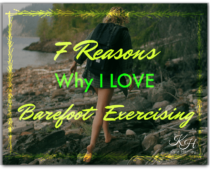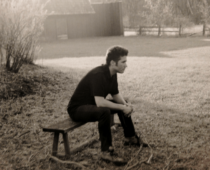15 reasons why walking in nature is your best health booster

15 reasons why walking in nature is your best health booster
Imagine if a therapy existed that benefitted your mental health as well as your physical health, had no horrible side-effects, was readily available for you to start right now and was totally free of charge? That would be great wouldn’t it? That therapy exists. What’s more, it’s existed since the human race began. It’s called walking in nature. And if you’re doubting it’s potency, myriad studies have shown it to help us on myriad levels. So get your walking shoes on and head out to a patch of greenery.
Imagine a therapy, free of charge, no side-effects, readily available and benefits your mental and physical health ... walking in nature is it! Click To TweetScientific studies prove walking in nature helps our brain function
In 2008, students from the University of Michigan experimented the memory recall of two groups of people. One group walked 2.8 miles in nature, the other group walked 2.8 miles in a city-setting. After the walk, both groups were tested for their memory recall. The experiment proved that there was a significant improvement in the memory of the group who walked in nature. Walking in nature helps boost our cognitive functioning aka brain power.
Walking in nature boosts our natural killer cells
Scientists in Japan have been leading studies which prove that walking in nature stimulates the immune system’s natural killer cells. Natural killer cells absorb phytoncides (essential wood oils) through the mucous membranes and skin which are given off by plants and trees. Phytoncides help to protect the plants and trees from pests and disease and it would appear, also boost our immune systems. Phytoncides have such a beneficial impact on the human immune system that they augment natural killer cells up to a period of 7 days after exposure to forest air. Furthermore the presence of stress hormones tested in urine was lower than before walking in nature. This means that as well as boosting our immunity, walking in nature reduces our levels of stress.
The scent of nature
Essential wood oils, primarily from cedar, cyprus, fir and pine trees, have been found to contain high levels of phytoncides so why not benefit from wood essential oils and bring the outdoors indoors?
I recently bought this ceramic essential oil diffuser to make the most of the wood essential oils I have in my collection. My favourite wood essential oils are eucalyptus, cypress, cedarwood, scots pine and fir needle. Using an essential oil diffuser is a healthy way of injecting fresh fragrances (and phytoncides!) into your home without the harmful chemicals associated with plug-in fragrances.
Humans thrive in a natural environment
Humans have walked the earth for over 4.4 million years. We are designed to live and prosper in a natural environment. Electro-magnetic fields from our electronic devices affect us negatively by compromising our immune systems. What’s more they leach away at our brain power as well as increase our stress levels. We need nature to help us remain healthy.
“Those who contemplate the beauty of the earth find reserves of strength that will endure as long as life lasts. There is something infinitely healing in the repeated refrains of nature — the assurance that dawn comes after night, and spring after winter.” Rachel Carson
Walking in nature restores our five senses
Walking in nature helps to reconnect us to all five of our senses: sight, sound, touch, smell and taste. There are few experiences more restorative than connecting with nature.
Cherish the sights of nature
Visually we benefit by watching the birds flit from tree to tree. We catch the upturned white tail of a rabbit as it scampers into its burrow. We marvel at the huge churns of newly ploughed earth stretching towards the horizon. The vivid colours of the rapeseed crop as it comes into bloom create a patchwork of bright yellow extending towards the horizon. The vibrancy and intricate shapes of autumnal leaves aglimmer with shades of bright red, gold, yellow and orange hang like precious jewels from the ancient trees as the sun guilds everything surrounding us. Nature offers us expansive views as far as the eye can see. Some mountainous, rugged and breathtaking, others softly-undulating and verdant. When we allow our eyes to drift to the horizon, when we see the gentle curvature of the earth in the distance, it helps lift us out of our self-imposed ‘box’ lives.
Treasure the sounds of nature
The sound of nature soothes us as she whispers to our primal brain. The gentle rustle as the wind breezes through the leaves of the trees and long grasses is deeply calming and offers us the benefit of meditative qualities. Birds punctuate the vital hum of earth with their shrill song. Acorns and nuts add their random staccato beat as they crack down to earth. Parched pine needles rustle as our feet disturb the dense carpet.
Relish nature’s touch
Nature caresses us as she kisses rosy cheeks with her breath. She tousles our hair as the wind whirls around us. The gnarled bark of the magnificent trees feels dry and rough to our human skin, providing refuge for the myriad tiny creatures which live within its folds. Or the smooth bark of eucalyptus trees, feeling silk-like as we touch the silvery skin.
Indulge in nature’s scent
The scent of nature is one my favourites, particularly as autumn takes a hold. As we scatter the fallen leaves, pine needles, acorns and chestnuts with our feet, the earth gives off her nutty and sweet vapours which permeate our skin and delight our chilled noses. Not only can we revel in her fragrance, we know that her essential oils are working their healthy magic inside of us too as she offers up her free gifts to nurture us.
Savour nature’s flavours
And finally, nature rewards us with her plentiful bounty of fruits and nuts. The hedgerows are full of nature’s resplendent offerings. The autumnal family rituals bring us together while we forage for blackberries, sloes, damsons, bullaces, gages, elderberries, quinces and haws, to name but a few. Nature’s delights are freely available to us turning our kitchens into heavenly-scented paradises as we make our wines, gins, tarts, pies and crumbles.
Why do we keep ourselves away from something which offers us so many benefits? Sometimes we just need to make the effort to put on our wellies and wake up our awareness of belonging to the queendom of mother nature.
“An early morning walk is a blessing for the whole day.” Henry David Thoreau
Walking in nature
Being in nature is therapeutic in itself, but when we combine the presence of nature with walking within it, the benefits grow exponentially. Walking is among the safest and easiest exercises to take part in. It’s ideal for all age groups and all weights and sizes. All you need is a good pair of shoes, comfortable clothing and maybe a map if you’re feeling adventurous. If you’re new to walking, just head out into nature and walk for 20 minutes or so each day. The benefit of walking in a natural environment is that the ground is softer than concrete or asphalt and your risk of injury is virtually nil. Gradually build up the distance and increase your speed as your fitness improves. If you are already reasonably fit, what are you waiting for? Get out there and make the most of your time immersed in nature. Try and be aware of all your senses so that you absorb as much nature-goodness as possible.
Walking is one of the safest and easiest exercises to do. Ideal for all age groups, weights and levels of fitness. Click To TweetHow walking in nature benefits your body
Walking is kind on your joints as well as good for improving bone density. It helps the body on several different levels. Firstly it strengthens the muscles of the core, lower back, gluteals and legs and when your muscles are stronger, you put less strain on your joints. Secondly, the hip joint is a synovial joint. The top of the femur (thigh bone) forms a ball which fits into the socket of the pelvis. The bones in a synovial joint are surrounded by a synovial capsule which secretes synovial fluid which lubricates and nourishes the joint while also acting as a shock absorber. When we use the joint, the walking motion encourages the production of more synovial fluid which helps to keep the joint in tip top condition. The knee and ankle are both synovial joints and benefit equally from the movement of walking.
Walking in nature is grounding
It’s so easy to get carried away with the trivialities of life that have a nasty habit of making the day vanish before our eyes. And no sooner has that day gone, another follows it just as quickly. When we are victim to our busy lives, it can seem as though we are losing all control and are simply being pushed and pulled from one thing to another with little regard for where we actually want to go. Walking in nature helps to slow down your perception of time. It helps you realise that you form a tiny, but integral part of an immense universe. Furthermore, it helps you become aware of your individual contribution to life and gives you a sense of belonging to something vast and awe-inspiring.
Walking in nature helps to slow down your perception of time. Click To TweetWalking barefoot
There is a growing awareness of the benefits of walking barefoot on the earth which provides us with negative electrons which help to balance out the overload of positive electrons we are surrounded with on a daily basis. Positive electrons come from wi-fi, microwave ovens, satellite dishes, radio frequencies, electro-magnetic fields to name but a few. Positive electrons build up within our bodies, compromise our immune systems and increase free-radical damage. By spending time barefoot on grass, dirt or natural surfaces, we help to rectify the balance of electrons in our bodies. I spend much of the warmer months barefoot indoors and outdoors when I am at home and believe this is partly responsible for the contentment I feel and good health I enjoy.
Children love being in nature
Give them half a chance and children love being outside immersed in nature. Where else can they run around like wild things, get totally muddy, pick wild berries off the hedgerows, climb haybales and have pure, unadulterated fun? What’s more, young children love collecting the vibrantly coloured autumnal leaves to make collages with. Furthermore, children love helping to bake a crumble or tart with the day’s foraging goodies.
Playing in nature
I spent many a day up trees with my sister and cousins as a child, and they are some of the happiest memories of my childhood. One of our favourite haunts was a hollowed tree we affectionately called Hollow Oak, which subsequently turned out to be a willow … We would often run barefoot across the fields trying to avoid the nettles and thistles. When our feet were too cold, we would find a freshly-laid cowpat, and yes, would stand in it to warm our chilled toes.
The joys of mud
I remember spending a glorious, sunny afternoon when, at the grand old ages of 4 and 6, my older cousin and I kicked the entirety of a deep muddy puddle at each other. I remember hiding under a dense hawthorn hedge with my younger cousin during a thunderstorm, making small pots out of the clay earth. Those days were so happy. My children both love tree climbing, whittling daggers and making fires and still regularly scale the nearby giants despite their adolescent years. In fact it’s a habit I still enjoy myself too. So let them run free and have fun away from their mobile phones, laptops and televisions. We need nature to keep us fit mentally and physically and children need it especially. Why don’t you join them too?
Rarely a happier day spent than huddled up inside our Hollow Oak, running wild, free and barefoot through the fields. Such happy times. Click To TweetWalking helps to shed the pounds
In 2014, the World Health Organisation reported that 600 million adults were registered obese. An even scarier fact is that in 2014 over 41 million children under the age of 5 were reported overweight or obese! Walking is a safe exercise option for people who need to focus on shedding the extra pounds.
In 2014 over 41 million children under the age of 5 were reported overweight or obese. Allowing your child to overeat is abusive. Take positive action. Click To TweetWhen we reduce our weight, we reduce our risk of developing:
- Type 2 Diabetes;
- Cardiac and circulatory problems;
- Cancers of the breast, ovaries, endometrium, pancreas, liver, colon, prostate, kidney and gallbladder;
- We reduce our blood pressure;
- We improve the health of our joints;
- Walking improves bone density
Count your burned calories
Mapmywalk.com offers an easy to use calorie calculator. You simply input your details, your type of exercise and voila! It gives you an idea of how many calories you burn during your periods of activity.
“The best remedy for those who are afraid, lonely or unhappy is to go outside, somewhere where they can be quite alone with the heavens, nature and God. Because only then does one feel that all is as it should be and that God wishes to see people happy, amidst the simple beauty of nature. As longs as this exists, and it certainly always will, I know that then there will always be comfort for every sorrow, whatever the circumstances may be. And I firmly believe that nature brings solace in all troubles.” Anne Frank
Walking in nature helps combat depression
Walking in nature boosts the endorphins (feel good hormones) that our brains create, it helps us to feel better about our bodies and gives us confidence in our ability to look after ourselves. Exercise helps us to sleep better, deal with stress more effectively and helps to keep us on track to achieve positive behaviours. Walking gets the blood and oxygen pumping around our bodies. Oxygen and blood transport life-giving nutrients that we need to maintain a healthy mind and body.
Walking and dopamine
Walking encourages our brain to release a chemical called dopamine. Dopamine is a neurotransmitter concerned, among other things, with the pleasure centre of the brain. It helps us to find the motivation to make walking a regular activity and increases our focus and memory. So we have walking to thank for helping our brains remember the way back home.
Walking in nature and UV light
What’s more, walking in nature helps to boost our UV levels which helps the body to create vitamin D. Vitamin D is essential for our health and is a vitamin we do not make ourselves. Most cells and tissues of the body contain Vitamin D receptors . And it’s for this reason that vitamin D has such a wide range of therapeutic benefits. It also manages levels of calcium and phosphorous in the blood, bones and gut and helps cells all over the body to communicate properly. In short, vitamin D is vital to our survival. We need exposure to UV light.
What are you waiting for?
Personally I find that walking in nature helps to lift the lingering, cottony fog of my day to day existence. It makes everything appear sparkling clean, as if I’ve just come from another planet. As though I can see, feel and experience life in a new way, living more vibrantly, loving more intensely, filled with more energy, feeling more balanced and calm.
Walking in nature helps to lift the lingering, cottony fog of day to day existence. It makes everything appear sparkling clean, as if just arriving from another planet. Click To TweetSo why not give it a go? And remember to be aware of all of your five senses to ensure you intentionally appreciate the wonder, beauty and majesty of mother nature’s queendom.
How does walking in nature make you feel? Thank you for taking the time to read this article.























